From the sidelines of the UN Climate Summit in Glasgow.
por Miguel Booth
Growing up I don’t recall seeing Latinx environmental champions on the TV, do you?
I remember being inspired by Sir David Attenborough or Jacques Cousteau. I marveled at the beauty of nature and the outdoors in far-flung places brought to me by the BBC, National Geographic, or the Discovery Channel but never by Univision, Televisa, or other Latino media giants featuring local talent.
It’s not that Latin American or Latinx environment champions weren’t there, of course they were. From Ushuaia to Alaska, and all around the world, we find inspiring examples of people caring deeply about nature, making it their purpose to protect it and going as far as risking their lives for it. Chico Mendes, Berta Cáceres, Joan Baez, Cesar Chavez, and countless others laid the foundations in the fight for human and environmental rights for all. But it seemed it was always in the context of intense struggle and sacrifice, correcting the wrongs that had fallen upon their communities not hosting a feature documentary or given a prominent platform on TV to inspire audiences to love and protect the outdoors.
And now, in our ever digital and synthetic reality, there is a sense that many people are distancing away from nature. This trend may have deeply disturbing consequences. How are we to love and care for nature and the outdoors if we have no emotional connection to it? Perhaps one of the most important ways is by keeping the connection alive through stories, images, and films that bring nature into the cities.
As a kid growing up in Mexico, my escape into nature ignited a curiosity that eventually steered my career choice. It was an unconventional journey for sure. As my friends turned to careers in finance, business, engineering and law – I chose wildlife and environmental filmmaking. I got a lot of puzzled looks, was that even a career? Latin America had zero schooling options for it, so I headed to New Zealand.
I was one of the lucky few. The first Latin American to graduate with a Natural History Filmmaking and Communication Degree and soon joined the International Fund for Animal Welfare in Massachusetts where I spent 10 fulfilling years traveling the world highlighting animal rescue and conservation efforts. Later, I moved with my family to Nairobi, Kenya, and took up the position of Head of Multimedia for the UN’s Environment Programme
Picking up a camera was always just an excuse for me to go outdoors, to travel, and explore. And surely if others could see what I film out there, they would care and they would also worry about how fast it’s changing, right?
I’m now writing this from the sidelines of COP26 in Glasgow. This is the United Nations’ climate summit, a space where governments, private sector, civil society, activists, and observers come together to come up with a way of limiting warming to the 1.5°C target set out a few years back in Paris. I won’t sugar coat it, we’re a long way from achieving the target. In fact, a +2°C is practically guaranteed and even a 3°C increase is in the cards. Governments are moving slowly and cowardly, businesses are operating ‘as usual’ prioritizing profit and growth over everything else and sadly even many NGOs are happy to play along with greenwashing if it allows them to continue operating.
Now more than ever, we need the Latinx community to take extreme ownership for the environment. Why? Because it’s in our DNA. We are the sons and daughters of Chico, Berta, Joan, and Cesar. The outdoor spaces that we love, those that we depend on for our very survival are on the brink of collapse.
So, my call to you is grab your camera or mobile phone next time you’re outdoors. Take photos and video and share that around. Become the next Attenborough or Cousteau. Tell everyone how you enjoy it out there and why it’s important to act now. Inspire us with nature’s beauty but also report on the ugly. The air and water pollution, the clearcutting of forests, the dwindling presence of insects, birds, whatever you see.
Follow and help amplify the message of other Latinx champions that are fighting to protect the planet. Young activists like Alexandria Villaseñor, Xiye Bastida, Jamie Margolin, Xiuhtezcatl Martinez, and also urge Latin American institutional leaders like Patricia Espinosa and Christiana Figueres to level-up on their side. There is no time to waste.
On my side, I’ve recently launched Dreamcatcher, a purpose-driven group of filmmakers and nature expedition experts to inspire a deep love for our natural world. We’d love for you to check out what we’re up to and join us in one of our upcoming adventures. We are inspired by the Latino Outdoors community, and we’re excited to grow together.
Hasta pronto.
A seasoned filmmaker and adventurer, Miguel Booth has produced films in over 60 countries in the past decade. His award-winning films have been showcased by National Geographic, GoPro, Discovery, CNN among others. Miguel served as the UN’s Head of Multimedia for the Environment from 2016 to 2019. In 2020, he founded Dreamcatcher with his wife Gabriela – their films and expeditions look to inspire a global community to love, protect, and live in harmony with nature.







